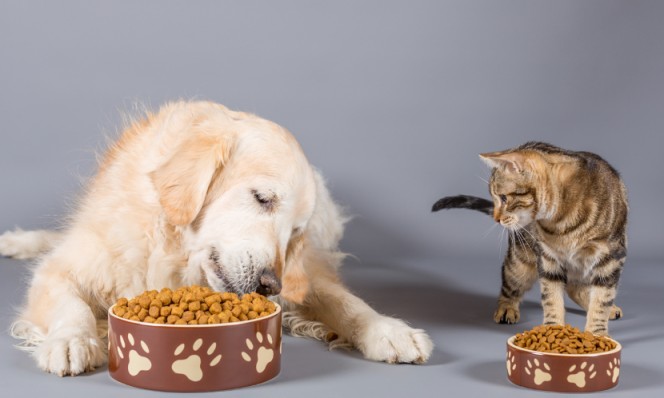As pet owners, we strive to provide our beloved furry companions with the best nutrition possible. Pet food flavoring enhancers play a crucial role in making their meals appetizing and enjoyable. In this SEO guest post, we will delve into the world of pet food flavoring enhancers, exploring their benefits, types, and how they enhance the palatability of pet food. Join us as we uncover the secrets behind these flavor-boosting ingredients!
Connect with a verified veterinarian in minutes. Licensed vets are available 24/7 to answer your questions. No need to worry about your furry family member.

Understanding Palatability in Pet Food
Before we dive into flavoring enhancers, let’s first understand what palatability means in the context of pet food. Palatability refers to the taste, smell, and texture of pet food that make it appealing to our furry friends. Just like humans, pets have taste preferences, and ensuring their food is palatable is crucial to their overall well-being.
The Importance of Pet Food Flavoring Enhancers:
Pet food flavoring enhancers are ingredients added to pet food formulations to improve their taste and aroma. These enhancers are designed to entice pets and encourage them to eat their meals with gusto. By enhancing the palatability of pet food, these additives help address issues like picky eating, low appetite, or feeding difficulties that pet owners often encounter.
Common Types of Pet Food Flavoring Enhancers
a) Natural Flavorings: Natural flavoring enhancers are derived from animal or plant sources and are highly valued for their authentic taste and aroma. These may include real meat extracts, poultry or fish flavors, or even vegetable broths.
b) Synthetic Flavorings: Synthetic flavoring enhancers are created using artificial compounds that mimic natural flavors. These compounds are carefully formulated to ensure safety and consistency in flavor. Synthetic flavors offer a wide range of options, allowing pet food manufacturers to create diverse taste profiles.
c) Hydrolyzed Proteins: Hydrolyzed proteins are derived from the breakdown of larger proteins into smaller components. These proteins provide a rich and savory taste that appeals to pets. Hydrolyzed protein enhancers are particularly useful for pets with sensitive digestive systems or food allergies.
d) Fat Enhancers: Fats are an essential component of pet food flavoring enhancers. They provide a rich, indulgent taste and help enhance the aroma of the food. Fats derived from animal or plant sources are carefully selected and added in appropriate amounts to create a delectable meal for pets.

Review symptoms, medications & behavior to keep your pets healthy with a Vet Online in just minutes.
Ask a Vet Live NowCommon Flavoring Enhancer Ingredients
Animal-Based Extracts: Derived from meat or poultry, these extracts provide a natural and authentic taste that appeals to pets.
Vegetable-Based Flavors: Extracts from vegetables like carrots, peas, or sweet potatoes add a wholesome flavor and nutritional value to pet food.
Synthetic Flavorings: Developed to mimic natural flavors, synthetic additives provide consistency and versatility in achieving desired taste profiles.
Guidelines for Choosing Flavoring Enhancers
Consult with a Veterinarian: Before introducing any new additives to your pet’s diet, it’s crucial to consult with a veterinarian who can recommend suitable flavoring enhancers based on your pet’s specific needs.
Quality and Safety: Look for flavoring enhancers from reputable brands that prioritize quality and safety. Ensure the ingredients are safe for pets and meet industry standards.
Dosage and Application: Follow the recommended dosage instructions provided by the manufacturer and consider your pet’s preferences. Start with small amounts and gradually increase if necessary.
Balancing Palatability and Nutrition
While pet food flavoring enhancers play a vital role in improving the taste of pet food, it is crucial to strike a balance between palatability and nutrition. Pet owners should ensure that the food they provide meets their pets’ nutritional needs without compromising their overall health. The quality of the ingredients, including the flavoring enhancers, must be assessed to ensure they meet high standards.
Choosing Quality Pet Food
When selecting pet food, it is important to consider reputable brands that prioritize quality ingredients and follow stringent manufacturing standards. Look for products that clearly state the presence of flavoring enhancers and provide transparency about the types used. Understanding the sourcing and processing methods can help make an informed decision.
Conclusion
Pet food flavoring enhancers play a significant role in enhancing the palatability of pet food, making mealtime a delightful experience for our furry friends. By understanding the different types of flavoring enhancers available and choosing quality pet food products, we can ensure our pets receive both nutrition and enjoyment from their meals. Remember, a happy and satisfied pet starts with a delicious and flavorful meal!
Connect with a verified veterinarian in minutes. Licensed vets are available 24/7 to answer your questions. No need to worry about your furry family member.

Tom
Tom has always loved to write since he was little - he wanted to be either a writer or a veterinary doctor, but he ended up being a professional writer while most of his works are based on animals. He was born in San Francisco but later moved to Texas to continue his job as a writer. He graduated from the University of San Francisco where he studied biotechnology. He is happily married and a soon to be father!
Review symptoms, medications & behavior to keep your pets healthy with a Vet Online in just minutes.
Ask a Vet Live Now
